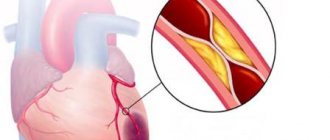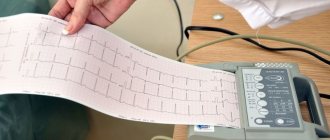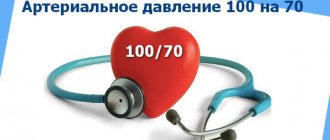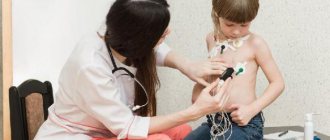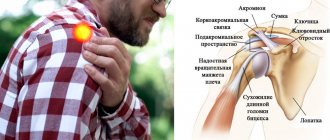Modern people have a simple attitude towards pain: if you get sick, take a pill and return to your normal life. However, sooner or later the body stops responding to traditional medicine - the pain returns more and more often. A new stage begins - examinations, visits to doctors, new medications...
Eastern sages believed that human health cannot be assessed only by physical condition. Equally important is mental pain, which doctors, our contemporaries, do not pay any attention to. What is the true cause of pain in the joints, in the heart, in the kidneys? Let's consider a somewhat unconventional view of the problem.
The key to health is harmony of soul and body
What is internal conflict and how does it affect our health?
The basis of any psychosomatic illness is internal conflict. For example, the contradiction between “I can”, “I want” and “I must”. If a person does a job he doesn’t like and still earns good money, he is in a state of conflict between “I want” and “I need.” The source of constant tension remains with him constantly, the psyche cannot cope with stress and turns on a defense mechanism - somatization.
The brain channels tension through the autonomic nervous system, which controls the functioning of internal organs. What it will be - osteoarthritis of the knee joint, pyelonephritis or a banal migraine - depends on the human body, its weak points and inclination.
Are you doing something you don't like? Expect health problems
Lower back pain with lumbar osteochondrosis
Lower back pain with osteochondrosis can intensify with coughing and sneezing, with any movements, especially when bending the body forward. Along with lower back pain, lumbar osteochondrosis can manifest itself as a disturbance in the sensitivity of certain areas of the skin or muscles of the lower half of the torso and legs. As a rule, with osteochondrosis, curvature of the lumbar spine is observed. Most often, lumbar osteochondrosis manifests itself as radicular pain - i.e. developing as a result of pinching of nerve roots extending from the spinal cord at one level or another.
One of the well-known lumbar syndromes is lumbago.
Why “all diseases come from nerves”
Some psychotherapists link illnesses to the way a person expresses their emotions. If a person wants to express an emotion, but does not do so because of a conscious prohibition, the energy is not released, but rather is directed inward.
Muscles and joints are most involved in emotional expressive movements. If we constantly hold ourselves back, it is as if we are freezing them. A kind of stagnation occurs in the joints, metabolism is disrupted, which becomes a powerful provoking factor for the development of coxarthrosis or gonarthrosis.
Ignoring emotions leads to problems with other internal organs related to the nervous system. The heart, liver, and gastrointestinal tract organs are also involved in the expression of emotions, although not directly, so they also suffer.
Where does illness come from and why does our subconscious create it? How to correctly recognize the cause and deal with it? Opinion of an authoritative psychotherapist and psychologist:
Low back pain due to lumbago
Lumbago is an attack of sudden and sharp pain, as well as muscle strain in the lumbar region. Occurs, as a rule, at the time of physical activity or after it, and is provoked by overheating and subsequent cooling of the body. Suddenly, within a few minutes or hours, a sharp shooting pain (“lumbago”) appears, sometimes it has a burning and bursting character (“as if a stake was stuck in the lower back”).
The patient cannot straighten up, the back muscles are tense. The slightest movement, coughing or physical stress aggravates the pain. Pressure on the lower back causes pain. With repeated attacks of lumbago, pain often appears in the posterior or posterior surfaces of the thigh or lower leg (lumboischialgia), which indicates the involvement of the corresponding spinal roots in the pathological process. Sciatica develops as a result of pinching of a root located slightly lower than with lumbago.
Or maybe this is a “family” disease?
Very often, when diagnosing arthrosis of the elbow, knee, or hip, many remember that their relatives had similar problems. If someone in the family had a weak heart, sooner or later other family members, in order to be “their own,” will begin to complain of heart ailments. In such cases, psychosomatics is combined with real symptoms, and it is no longer so easy to figure out what actually caused the illness.
30-60% of patients who seek medical attention have unexplained symptoms
Physiotherapy for back pain
Physiotherapy for back pain is a key step in the relief and treatment of pain. It is a necessary component in the prevention of complications, tissue restoration, and inflammation relief. The treatment regimen can use either one technique or several at once to enhance the therapeutic effect.
The use of physiotherapy enhances the effect of almost any medicinal substance, can help shorten the treatment time for acute diseases, reduce the duration of periods of exacerbation of chronic diseases and increase periods of remission.
There are a number of physiotherapeutic procedures used to treat back pain: ultraviolet irradiation, electrophoresis, laser therapy, acupuncture, Lyapko application therapy, physical therapy, massage, balneotherapy, mud therapy and others.
The use of physiotherapeutic treatment for acute pain is contraindicated, since with increased blood circulation, tissue swelling will increase, which will contribute to the severity of the pain syndrome. It is necessary to improve blood circulation after the acute pain has passed and the swelling begins to decrease. This is usually 2-3 days after anti-inflammatory, anti-edematous, analgesic drug treatment has been started.
The use of Lyapko application therapy in the acute period is permitted, but the individual characteristics of the patient must be taken into account. If the pain intensifies, then you need to wait 2-3 days, if it becomes easier, then continue treatment with the applicator.
Application therapy Lyapko
Lyapko applicators in various modifications (plates, rollers, application belts, application tapes) are an original, powerful device with many health-improving therapeutic capabilities.
Their action is based on the principles of traditional Chinese medicine - superficial multi-needle acupuncture, as well as on the general physiological mechanisms of life.
Mechanisms of action of the applicator.
The high healing effect of Lyapko applicators is due to a combination of intense reactions:
- reflex-mechanical;
- galvano-electric;
- immunological.
Application therapy has a pronounced analgesic and antispasmodic effect. Improves blood circulation, lymph flow, microcirculation, reduces tissue swelling. Activates tissue mechanisms of immune defense, increases the level of its own opiate peptides and anti-stress hormones in the blood, reduces the level of sensitivity of pain receptors, has a positive psycho-emotional effect and, as a result, stimulates general human adaptation mechanisms. In contact with the skin, the applicator needles stimulate the release of a person’s internal medicines, engaging his “inner doctor” in the work.
It is important to note that local (local) improvement of blood circulation during application therapy occurs without additional stress on the heart, since the work of peripheral circulation increases and the heart rests at this time. This is very important for all categories of patients and, especially, with coronary heart disease, circulatory failure of 1-2 degrees, and elderly people.
For back pain, many patients experience positive dynamics from Lyapko application therapy. It is combined with all types of medication and physiotherapeutic treatment. The ease of use of Lyapko application devices and their safety make it possible to carry out such procedures at home.
After removing the applicator at the site of its application, all pores are open for 10 minutes, so to improve the healing effect, you can apply ointments and creams that have an analgesic and anti-inflammatory effect.
Medical Internet conferences
Let us turn to the increasingly convincing paradigm of twenty-first century medicine. This paradigm existed in ancient times: a holistic approach to man, uniting his body (in our terminology “corporality”), soul and spirit. According to the Russian philosopher I.A. Ilyin, neither the body nor the soul of a person are free, for they are bound by the laws of time and the causes of material nature. Only the human spirit has the gift of withdrawing itself internally from any life contemplation, opposing it to itself, evaluating it, choosing or rejecting it. The modern situation of life requires from a person flexibility, the ability to control circumstances, predict, “feel”, know, “know”, and be able to “Tao”. This is possible only in conditions of spiritual existence, when a person’s liberation begins from being “slagged” by someone else’s and his own self. We find similar practices in well-known schools: “disidentification” in psychosynthesis, “baptism” in Russian folk psychology, “purification” in the practices of the East, “confession” in various religious beliefs, “ascension” in integral psychoanalysis.
To understand the psychosomatic reality of a person, let us consider the relationship between the concepts of corporeality, soul and spirit. The separation of the concepts of “body” and “corporality” is of fundamental importance. “Body” means, first of all, a physical object that does not carry subjectivity. “Corporeality” is a spiritualized body. Human corporeality is a process of ontogenetic, personal development - in the broad sense of historical development and expresses the cultural, individual psychological and semantic components of the human being. The concepts of “body” and “corporality” are distinguished by a measure of vitality (examples: twins, body therapy, dancing, sports person ).
Corporality (flesh, living body, body, dynamic body) is considered as a special phenomenon and subject field of psychological research, occupying the space “between” the soul and the body, in its physical understanding. The space “between” is a space of rethinking, the emergence of new meanings, a space that connects opposites. The flesh was conceptualized as “the house and mirror of the soul, and the soul as the house and mirror of the spirit.”
Corporality reflects all the events and all the experiences that we acquire in the process of life. Corporality stores everything that has ever been experienced: events, emotions, stress and pain are enclosed in a bodily shell. A good specialist will always be able to guess the history of a person’s life, as well as determine all the accidents and diseases that have ever happened to a person, by the structure and shape of his body, by his movements, free or constrained, by tension in individual parts of the body. Our physicality records our experiences, traumas, worries, worries and attitudes towards ourselves, towards people, towards the world. To deny the connection between physicality and emotions is to doom yourself to a path that gives rise to the development of psychosomatic diseases. Corporality is a spiritualized body.
The spirit is the content of the soul. In this case, the soul containing the spirit endows it with a body, which acquires physicality. The soul, despite its apparent spacelessness, is located between the spirit and the body. All together they form the integral composition of a person. Reconciliation occurs in the space “between,” where the active spirit, the suffering soul meet with living, animated movements of the body (corporality).
The soul, like the body, can hurt. The soul, like the physicality, can be cleansed, treated, “healed.” The term “healing” is most appropriate here: to make whole, whole that which cannot be divided and treated separately.
The greatest violation of this trinity is observed in psychosomatic disorders. It is no coincidence that psychosomatic diseases are called “diseases of civilization”, “diseases of lifestyle”. I would add: “illnesses of the soul” (not to be confused with “mental”, i.e. mental illnesses). The absolute unity of body and soul is reflected in our well-being. Every state, good or bad, is a means by which we are given instructions about what is happening within us. For example, illnesses or accidents often coincide with life changes, such as a move, a new marriage, or a new job. Internal conflicts at such times can easily upset the balance in the body, causing uncertainty and fear. This makes us defenseless against aggressive viruses and bacteria. On the other hand, illness gives us time to rest, tune in to something new and get used to the change. The disease tells us that we need to stop doing something, with its help we can restore connection with those parts of the body with which it was lost. In addition, we can think about our affairs, rethink our relationships with loved ones and acquaintances. Thus, we see how wisely the body, soul and spirit communicate with each other, being in continuous interaction.
Unlike neuroses, which are based on an intrapsychic conflict, with psychosomatic diseases double repression occurs: not only a motive unacceptable to consciousness is repressed, but also neurotic anxiety about this, and all neurotic behavior in general.
An unresolvable conflict of motives (as well as irremovable stress) ultimately gives rise to a reaction of capitulation, a renunciation of search behavior. This creates the most common prerequisite for the development of psychosomatic diseases and manifests itself in the form of overt or hidden, masked depression. Which specific organs and organ systems are affected depends on the hereditary predisposition or the characteristics of personality development. The latter also determine the insufficiency of psychological defense mechanisms
The famous psychotherapist A. Meneghetti believes that not a single psychosomatic disease occurs due to stress, but stress is already a result, a consequence observed in the functioning of the organ.
Patients with emotionally-related psychosomatic illnesses most often first see a general practitioner. Each of us has this experience: when at a doctor’s appointment they see only that part of the body that currently “hurts.” But the body cannot be divided into independently functioning organs and systems, and their entirety, in turn, cannot be separated from feelings and mental experiences. A sick person remains an integral being, and in order to unravel the mystery of the disease, understand its cause, trace the history and choose the best method of treatment, it is necessary to take everything into account at once. Man is created according to the laws of harmony, and physicality is the most obvious evidence of the subtlety and development of the mind.
In modern medicine, the section of psychosomatics is represented by studies that highlight the role of stress in the pathogenesis of somatic diseases, the connection of pathocharacterological and behavioral characteristics with sensitivity or resistance to certain somatic diseases, the dependence of the reaction to illness on the type of personality, and the influence of certain treatment methods on the mental state.
The frequency of psychosomatic disorders is quite high and ranges in the population from 15 to 50%, and in general medical practice - from 30 to 57%.
In my opinion, the energy-information approach will be the most promising in the 21st century in studying the causes of psychosomatic diseases. A. Meneghetti, as a representative of this direction, believes that emotion is a kind of mental presence that begins to somatize. When the higher mind neglects the lessons of life, the lower mind is forced to defend individuation. Therefore, if the psyche does not find a solution in a conscious or unconscious form, then somatics intervenes, offering an alternative solution. Somatic and psychic energy differ in the speed of action: somatic is the slowest, therefore organic disease is a form of adaptation. In any case, somatization is always the result of an infantile reaction of the “I”. In his opinion, illness is one of the possible reactions that are presented to a person in what is, in his opinion, a hopeless situation. A pathological symptom is an extreme, partial solution taken to relieve tension and performs a double function: it keeps the forbidden drive (or desire considered unworthy by the subject) repressed and at the same time satisfies it on an unconscious level. Illness becomes a repressive and regressive object that allows the hidden struggle to be brought out into the open. It seems that it is easier to fight external forms than internal ones. And the body begins to fight with the help of the diseased organ.
There is no mysterious leap from the psyche to the soma, but we are dealing with continuity, identity, expressed in different languages of the same form of identical operational meaning, semantic content, that is, energy and information are jointly acting forms.
Psychotherapist Rudiger Dahlke believes that illness is a language, the speech of the subject and represents the path of a person. German doctor Rudolf Virchow notes that illness is a life constrained in its manifestations.
According to Arthur Meneghetti, illness is a search for a state of homeostasis in a regressive situation. Often, illness becomes catharsis, a spiritual cure, if it is recognized by the subject (example: cancer patients). In the face of death, an amazing phenomenon arises: the importance of spiritual values increases and material values depreciate. And is it not because a person begins to realize the truth of the proverb: “A funeral shroud has no pockets?” And is it not because death gives meaning to life, and meaning to death is given by what is beyond its threshold?
If we talk about the personality of a psychosomatic patient, then the existence of a prepsychosomatic personal radical is assumed - that radical of personal characteristics that lead to the disease; this is a focus of psychosomatic impulses, a fixed pathoplastic experience. It is formed in childhood and adolescence, more often in persons of choleric and phlegmatic temperaments. The main reason for the formation of this radical is the infringement of the fundamental claims of the individual, especially the sense of dignity arising from the dominant instinct. All psychosomatic personalities, to one degree or another, are characterized by something in common: infringement, and therefore a heightened sense of dignity, self-centeredness, narrowing of interests, limitedness and distortion of the hierarchy of values, goals and needs, which is manifested in the inadequacy of the claims that make up the individual’s life plan.
The psychosomatic subject is separated from his unconscious and closely tied to the world around him. Psychosomatic regression is regarded as a regression of the “I” to a primitive defensive level with tendencies in the form of somatization. The psychosomatic structure of personality is largely determined by the concept of “alexithymia”. It is noted that patients are characterized by a peculiar limited ability to fantasize, a typical inability to express experienced feelings, a high adaptability to companionship, an inability to have a true relationship with an object and the process of transference. Total identification with the object occurs; the psychosomatic patient exists, so to speak, with the help of another person. From this it becomes clear why the loss of this “key figure” is so often detected as a provoking situation at the onset of the disease.
The first thing that medical psychologists/psychotherapists record in a psychosomatic clinic is the patient’s suppressed emotions. Suppression of emotions is a marker of the psychosomatic nature of the disease. Therefore, the initial stage of work is the selection of examination tools that are adequate for each nosology. Traditionally, psychological research in a psychosomatic clinic is devoted to the study of the patient’s personal characteristics, family relationships, and parental directives. In order to bring psychological diagnostics closer to practice, the psychologist must direct it to the choice of psychotherapeutic and psychocorrectional targets. In this regard, the analysis of the patient’s personal and environmental resources becomes relevant.
It is important to use not only psychological tests, but also to be able to diagnose the patient’s behavior in significant situations. A favorable basis for work is the ability to reveal the patient’s inner world, to identify the unconscious motives of his behavior, hidden from him and which are the environment for the development of personality in illness. You can find out the types of family problems and current abilities by following the theory of positive psychosomatics. Pezeshkiana. To do this, it is necessary to test the patient through situations that are significant to him.
The psychotherapist provokes a process through which blocked personal forces in a person are mobilized. The goal is to monitor the patient's nonverbal expressions. The marker is the appearance of a reaction, which begins to be accompanied by changes in the body. Signs of a positive effect of work are gestures, sparkle in the eyes, and emotionality in speech. The result of the diagnostic situation is the patient’s awareness of the internal conflict between his natural emotionality and the need to restrain subconscious aggression towards situations that he cannot, but is forced to put up with due to habit. He becomes ready to “meet himself.” The patient must realize how the conflict forces him to react with a certain part of the body, an organ: “react with the skin,” “hold your breath,” “cry with your heart, etc.
The second stage is work on understanding the connection between emotions and the physiological state, the difficulties of understanding and expressing feelings. The task of the psychologist/psychotherapist is to help the patient label his emotional state and move on to training the ability to recognize emotions and the cognitive processes that accompany them, expanding the emotional vocabulary.
The third stage of work is changing the patient’s negative attitude towards negative emotions, identifying the reasons, who and when “forbade” him to express negative emotions, focusing on the mode of experience.
Once he begins to track situations in which he feels worse and learns to associate his painful state with emotional control, we move on to the fourth stage: learning coping models. The work can be carried out using techniques for neurolinguistic “anchoring” of the patient’s resource states in which he is comfortable, meditative techniques, training in muscle relaxation and deep breathing.
The fifth stage is the most difficult: working with fundamental motivations (according to Alfred Langley in the theory and practice of existential analysis). Working with the first motivation - “I am, but how can I cope with my existence?” – is to find inner support and develop fundamental trust. Cognitive-emotional psychotherapy with core beliefs can be used.
Working with the second motivation - “I exist, but how can I make it good for me to live here?” - can be carried out using psychosynthesis techniques through the coordination of the patient’s contradictory subpersonalities, filling the space of the patient’s own being with feelings.
The search for the third motivation - “I am me, but do I have the right to be myself?” - should lead the patient to authenticity. The work can be carried out both in psychosynthesis techniques through identification/disidentification, self-identification, “comprehension of one’s self,” and with the use of psychodrama and gestalt therapy.
The definition of the fourth motivation is “I am, but what is the meaning of my life in this world?” — consists of working with values, constructing new meanings, setting goals and can be performed using rational-emotive therapy techniques.
Conclusion:
Underestimating the importance of the patient’s inner world, his personal characteristics, attitude towards the disease and treatment, and his future does not allow for a holistic approach to treating the disease, and this, in turn, does not allow the use of the individual’s psychological resources to adapt to the disease and overcome its consequences.

